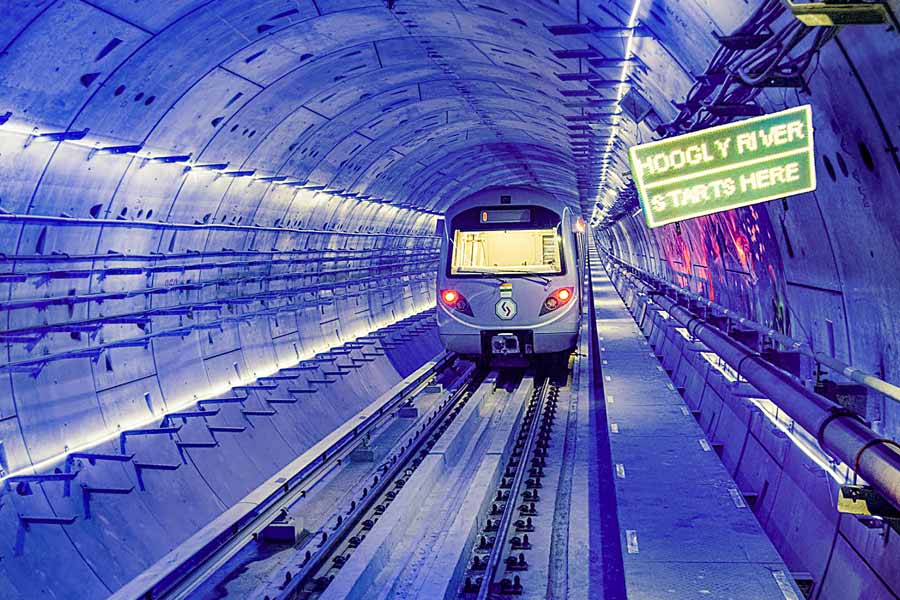A trial of the automatic signalling system, in trains and on the tracks, is
underway on the Sealdah-Esplanade stretch of the East-West Metro corridor
(Green Line).
The 2.5km stretch, which has seen three incidents of subsidence between 2019 and 2022, is the only under-construction section of the 16.6km line, which aims to connect Howrah Maidan and Salt Lake Sector V.
The signalling test, which follows civil engineering and electrical work, is key to meeting the target of making the remaining stretch — in effect, the entire corridor — functional by the start of 2025, said officials.
The signalling test, crucial for detecting and rectifying possible glitches in the signalling system, began on June 23. For now, the trial is being done in the east-bound (Sector V-bound) tunnel. The civil engineering work in the east-bound tunnel is almost complete, said sources in the Kolkata Metro Rail Corporation, the implementing agency of the East-West corridor. But the west-bound (Howrah Maidan-bound) is still not complete, they said.
“This is the first low-speed signalling test in the section. A six-coach BEML rake is making multiple trips between Sealdah and Esplanade through the east-bound
tunnel. It is stopping for examinations wherever needed. We are expecting problems. Only after we find them can we sort them,” an official said.
The trial is happening during the night, after the commercial services, on weekdays and through the day on Sunday, when there is no service. A different rake is being used every day.
When the trial started, the train moved at a speed of around 25kmph. Now, it has gone up to 30kmph, said engineers involved in the test.
“Recently, we came across a situation where the emergency brakes were automatically applied as a safety mechanism at two points. The problem at one point was fixed. Work to address the second point is on,” the engineer said.
The communication-based train control (CBTC) system, installed in East-West Metro, is an advanced anti-collision system that almost discounts the scope of human error, said railway engineers.
Functioning In the CBTC system, in the panel of the cabin, the driver can see the length of stretch of tracks in front that is free for the train to run, said one of them.
KMRC officials are looking forward to completing the signalling test on the east-bound tunnel by August and begin the trial on the west-bound (Howrah Maidan-bound) tunnel in September.
“But for that, the clearance of the civil engineering department is required. We have to gradually increase the trial speed to 50kmph. The civil department has to declare the tracks fit for trains running at an increased speed. If the clearance to raise the speed comes in the next fortnight, we should be able to finish work on the east-bound tunnel by August. Another nod will be needed to begin work on the west-bound tunnel,” said an official.
After the signalling trials are successful, some minor electrical work needs completion on the Sealdah-Esplanade section. Some work on tunnel ventilation also needs to be done, said sources in the KMRC.
“Then, an independent safety auditor will inspect the section. After a nod from the auditor, the commissioner of railway safety will be invited for an inspection,” an official said.
A CRS nod is mandatory before the start of commercial runs.










